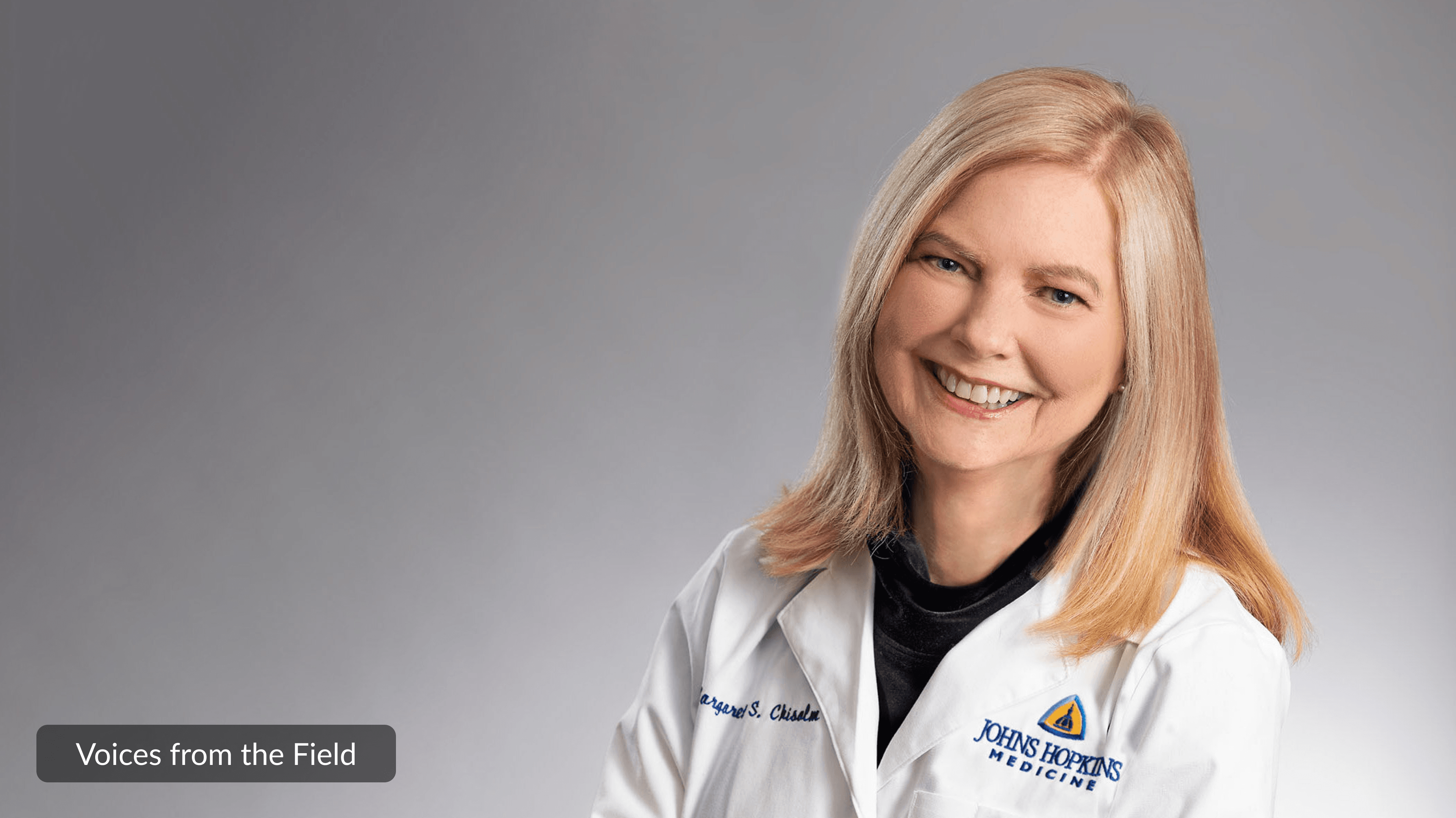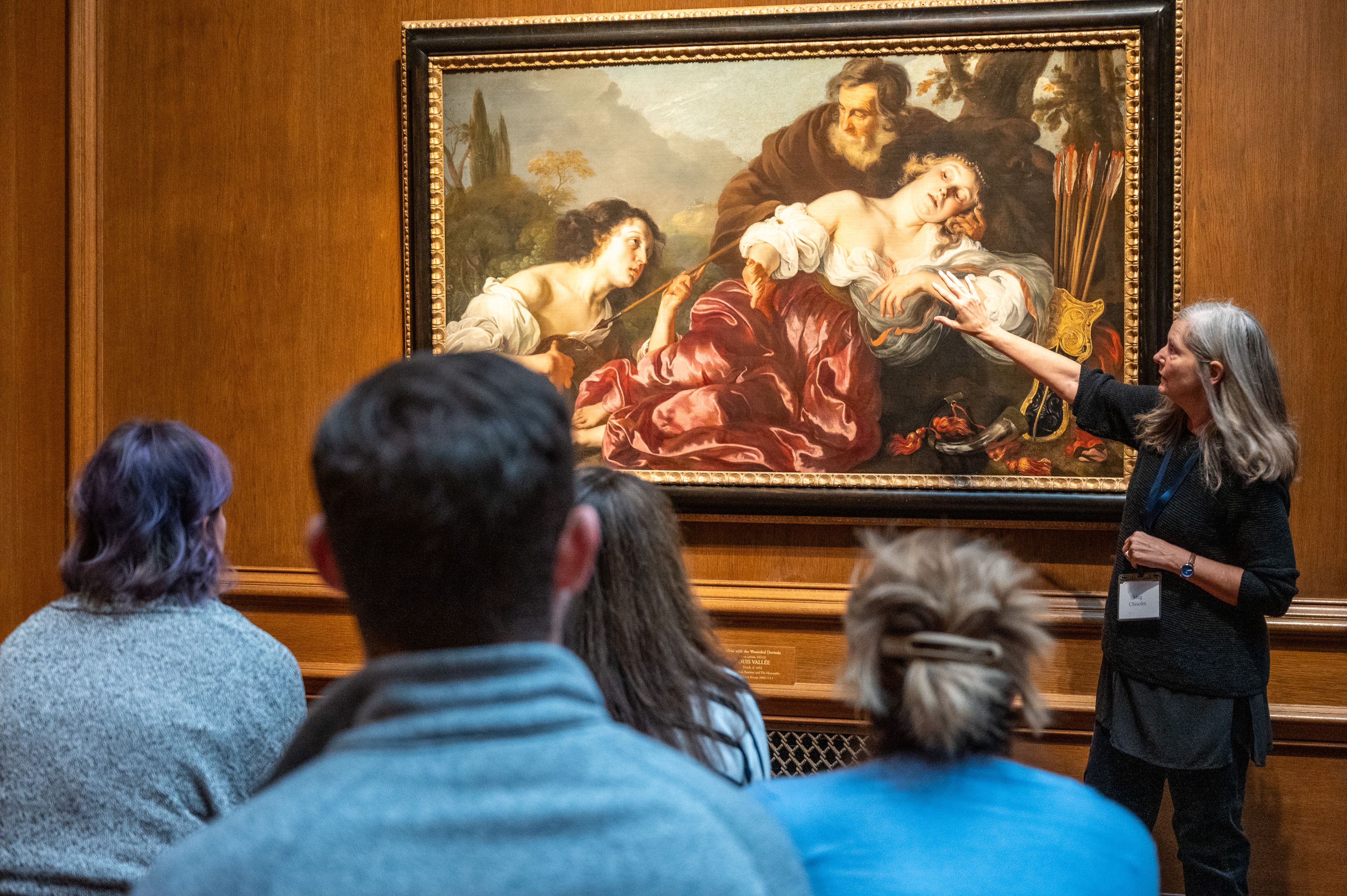Voices from the Field: Margaret Chisolm

What first inspired you to explore the connection between the arts, health, and/or science?
I have a long and deep relationship with the connection between the arts, health, and science. In college, I studied visual and performing arts – with a concentration in film – and was accepted to graduate school in cinema studies at New York University. However, the summer before I was to matriculate, I stumbled upon a photo-essay by the art critic John Berger and photographer Jean Mohr – A Fortunate Man: The Story of a Country Doctor. This portrait of a country doctor in rural England in the late 1960s pulled me away from the arts and into the world of medicine. I returned to college to complete the pre-requisite science courses for medical school, and eventually became a physician myself. I’ve now come full circle in my career to a place in which the arts and health are fully integrated.
In your view, what makes the arts and aesthetic experiences uniquely powerful tools for advancing health and wellbeing—and how does your work contribute to translating that potential into practice?
The ultimate goal of my work is to humanize medicine from the inside out. I do this by supporting the flourishing (e.g., happiness/life satisfaction, mental/physical health, meaning/purpose, character/virtue, close social relationships) of health professionals so they are able to provide the kind of humanized medical care that allows their patients to flourish. We have all experienced the ability of art to provoke powerful emotions, from terror to wonder (and everything in between). I’ve learned how to design arts-based programs for health professions learners and practitioners that will yield predictably powerful emotional experiences, which – when combined with personal reflection and group support – lead to their personal and professional growth and overall flourishing. For example, my 4-week museum-based course for 4th year medical students at Johns Hopkins includes over 45 arts-based learning activities, including at least a dozen Visual Thinking Strategies discussions (these are facilitated, open-ended conversations prompted by a work of art). In addition to supporting the students’ personal and professional growth and overall flourishing, the course improves their capacity for wonder, tolerance for ambiguity, empathy, and openness to diversity.
 Dr. Chisolm facilitates a Visual Thinking Strategies discussion with a group of US and Canadian health professions education leaders at the National Gallery of Art in Washington DC. Photograph by Jennifer Bishop.
Dr. Chisolm facilitates a Visual Thinking Strategies discussion with a group of US and Canadian health professions education leaders at the National Gallery of Art in Washington DC. Photograph by Jennifer Bishop.What challenges do you see in building a more cohesive and equitable neuroarts ecosystem?
A number of challenges exist to building a more cohesive and equitable neuroarts ecosystem for health professions learners and practitioners, but number one is time. For health professions students, this means getting time in the curriculum to introduce arts-based experiences. For graduate level trainees and practitioners, this means getting time in their training or work schedules that will allow them to participate in arts-based programs. The number two challenge is the availability of faculty who are well trained in facilitating arts-based experiences. Psychological safety is foundational to supporting personal reflection and group discussion of the emotional experiences provoked by art. This means that the size of the group in which these activities take place must be small in number, which necessitates a low faculty:learner ratio and thus a need for many faculty who are skilled in facilitative teaching.
What kinds of support, collaboration, or infrastructure would most help you expand and/or scale your work? What are existing resources that you have found most useful?
The Association of American Medical Colleges (AAMC), and other higher education organizations across the world, have recognized the fundamental role of the arts and humanities generally in health professions education. However further research is needed on how integrating art into health professions education results in tangible benefits to patients. It is expensive to conduct studies rigorous enough to demonstrate a causal link between arts-based teaching and patient outcomes, but evidence of that strength will be necessary to persuade health professions education leaders to integrate arts-based programs into health professions education. The high-quality research that is needed to address the challenge of getting time in the curriculum for these programs will require a significant investment of funding. Funding opportunities are quite limited for education research of any kind, especially research on the arts and humanities. In 2020, the AAMC funded a few arts and humanities education research projects as part of their Fundamental Role of the Arts and Humanities in Medical Education initiative, but none since.
An easier and perhaps more foundational challenge to address is the need to train more facilitators to help scale and evaluate arts-based teaching (i.e, to both implement programs and conduct the needed research). We have started to offer continuing professional development courses in Visual Thinking Strategies facilitation for health professions, although participating in these require an investment of time and money by the learners, both of which have been barriers. Scholarships for tuition would be of help to those health professionals who don’t receive tuition remission from their employers. I was also part of the design team for a pilot online faculty development curriculum offered by the AAMC on how to conduct medical education research in the arts and humanities. Although this course has not yet been formally offered it offers a potentially valuable template for moving the field of arts-based health professions education forward.
Looking ahead, what is one bold idea or hope that you have for the future of neuroarts?
My one big, bold idea for the future of neuroarts is to create a team of arts-based health professions educators who would provide training in the design, implementation, and evaluation of arts-based health professions education to select faculty at every health professions education school in the US and Canada. With philanthropic funding for both the teaching team and the participants, this could be delivered tuition-free, either on-site at each school or at a single location such as the Johns Hopkins Bloomberg Center in Washington, DC (adjacent to the National Gallery of Art) for which travel expenses would be provided.

